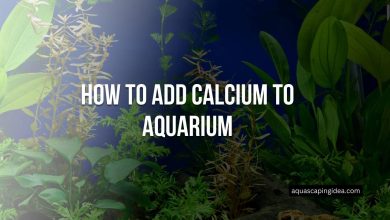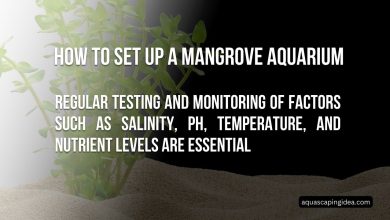How to Get Rid of Duckweed in Aquarium?
As an aquarium enthusiast, you’ve likely encountered the tiny, leaf-like menace known as duckweed. This fast-growing aquatic plant can quickly transform your carefully curated underwater paradise into a green, murky mess. While duckweed (Lemna minor) may have its place in natural ecosystems, it’s often an unwelcome guest in home aquariums. In this comprehensive guide, we’ll explore the nature of duckweed, why it’s problematic, and most importantly, how to effectively rid your aquarium of this persistent plant.
Understanding Duckweed: Know Your Enemy
What is Duckweed?
Duckweed is a small, free-floating aquatic plant belonging to the family Lemnaceae. It’s characterized by its tiny, oval-shaped leaves (or fronds) that float on the water’s surface. Each plant typically consists of 1-3 fronds, with a single root hanging below.
Why is Duckweed a Problem?
While duckweed can have benefits in certain contexts, it poses several challenges in aquarium settings:
- Rapid growth: Under favorable conditions, duckweed can double its population in just 24-48 hours.
- Light blockage: A thick duckweed cover prevents light from reaching submerged plants and can disrupt the aquarium’s ecosystem.
- Nutrient competition: Duckweed rapidly absorbs nutrients, potentially depriving other plants of essential elements.
- Aesthetic issues: A duckweed-covered surface can obscure the view of your aquarium’s inhabitants and decor.
- Filter clogging: Duckweed can easily get sucked into filters, reducing their efficiency and potentially damaging equipment.
Prevention: The First Line of Defense
As with many aquarium issues, prevention is often easier than cure. Here are some strategies to prevent duckweed from taking hold in your tank:
1. Quarantine New Plants
Always quarantine new plants before introducing them to your main tank. This allows you to observe and treat any hitchhikers, including duckweed.
Quarantine Process:
- Set up a separate quarantine tank
- Keep new plants in this tank for at least 2-3 weeks
- Regularly inspect the water surface for any signs of duckweed
- Treat any observed duckweed immediately
2. Proper Plant Inspection
When purchasing new plants, carefully inspect them for any signs of duckweed. Pay special attention to:
- The base of stems
- Between leaves
- Any floating matter in the water
3. Maintain Optimal Water Conditions
Duckweed thrives in nutrient-rich environments. Keep your water parameters in check to discourage its growth:
- Regular water changes (25-30% weekly)
- Proper filtration
- Avoid overfeeding fish
- Use chemical filtration media to remove excess nutrients
Manual Removal: The hands-on approach
When duckweed has already established itself in your aquarium, manual removal is often the first step in regaining control.
1. Surface Skimming
Use a fine-mesh net to skim the water surface, removing as much duckweed as possible. This method is time-consuming but effective for small to moderate infestations.
Pro Tip: Perform this task just before a water change to remove any duckweed that sinks during the process.
2. Water Surface Vacuuming
For larger tanks or more severe infestations, consider using a specialized surface skimmer or a regular aquarium vacuum with a skimmer attachment.
3. The Paper Towel Technique
This simple yet effective method involves:
- Laying a paper towel on the water surface
- Allowing it to absorb water and collect duckweed
- Carefully removing the paper towel along with the trapped duckweed
Repeat this process until most of the visible duckweed is removed.
4. Consistent Maintenance
Regardless of the manual removal method you choose, consistency is key. Set a regular schedule for duckweed removal, ideally daily or every other day, until the problem is under control.
Chemical Control: When manual methods aren’t enough
In cases of severe infestation or when manual removal proves too time-consuming, chemical control methods may be necessary. However, these should be used with caution as they can affect other plants and aquarium inhabitants.
1. Algaecides
Some algaecides are effective against duckweed. Look for products containing:
- Copper sulfate
- Diquat
- Fluridone
Caution: These chemicals can be harmful to fish, invertebrates, and beneficial bacteria. Always follow the manufacturer’s instructions and consider removing animals before treatment.
2. Hydrogen Peroxide Treatment
A more natural alternative to commercial algaecides is hydrogen peroxide (H2O2). Here’s how to use it:
- Remove fish and invertebrates from the tank
- Add 1-2 ml of 3% hydrogen peroxide per gallon of water
- Let it sit for 15-20 minutes
- Perform a large water change (50-70%)
- Run carbon filtration for 24 hours before reintroducing animals
3. Selective Herbicides
Some aquarium-safe herbicides specifically target duckweed without harming other plants. These often contain fluridone as the active ingredient.
Application Process:
- Calculate the tank volume accurately
- Dose according to the product instructions
- Maintain water circulation for even distribution
- Monitor water parameters closely during treatment
Biological Control: Nature’s way of balance
Introducing natural predators of duckweed can be an effective and eco-friendly method of control.
1. Fish That Eat Duckweed
Several fish species are known to consume duckweed:
| Fish Species | Duckweed Consumption Rate | Tank Size Requirement |
|---|---|---|
| Goldfish | High | 20+ gallons |
| Koi | Very High | Pond or large tank |
| Tilapia | High | 50+ gallons |
| Grass Carp | Very High | Pond only |
| Mollies | Moderate | 10+ gallons |
Note: Ensure that the chosen fish species is compatible with your existing aquarium inhabitants and conditions.
2. Duckweed-Eating Invertebrates
Some aquatic snails and crustaceans also feed on duckweed:
- Ramshorn snails
- Apple snails
- Freshwater crayfish
3. Competitive Plants
Introducing fast-growing floating plants can compete with duckweed for nutrients and space:
- Water lettuce
- Amazon frogbit
- Red root floaters
These plants are easier to control and can provide similar benefits to duckweed without the rapid spread.
Environmental Manipulation: Changing the game
Altering the aquarium environment can make it less hospitable for duckweed growth.
1. Increase Water Movement
Duckweed prefers calm water surfaces. Increasing surface agitation through:
- Stronger filter outflow
- Air stones
- Circulation pumps
can significantly hinder duckweed growth and spread.
2. Reduce Lighting
While duckweed can grow in low light, reducing overall tank lighting can slow its growth:
- Decrease photoperiod to 6-8 hours daily
- Use floating plants with larger leaves to shade the surface
- Consider using red or blue LED lights, which are less favorable for duckweed growth
3. Nutrient Control
Limit the nutrients available to duckweed:
- Regular water changes
- Use of nutrient-absorbing media in filters
- Careful feeding to avoid excess food waste
- Proper plant fertilization techniques to ensure other plants outcompete duckweed
Long-Term Management: Keeping duckweed at bay
Once you’ve successfully removed the bulk of the duckweed, it’s crucial to implement long-term management strategies to prevent its return.
1. Regular Monitoring
Set aside time each week to inspect your aquarium for any signs of duckweed resurgence. Early detection is key to preventing another full-blown infestation.
2. Maintain a Balanced Ecosystem
A well-balanced aquarium is naturally more resistant to duckweed overgrowth:
- Ensure proper filtration
- Maintain a diverse plant community
- Keep fish populations at appropriate levels
- Regular water testing and parameter adjustments
3. Implement a Combination of Methods
Use a mix of the techniques discussed earlier to create a multi-faceted approach to duckweed control:
- Weekly manual removal
- Biological control with duckweed-eating fish
- Environmental adjustments (e.g., increased water movement)
- Careful nutrient management
4. Educate Yourself and Others
Stay informed about duckweed control methods and share your experiences with other aquarium enthusiasts. Join online forums or local aquarium clubs to exchange tips and tricks for duckweed management.
FAQ: Common Questions About Duckweed Control
Q1: Is duckweed always bad for an aquarium?
A: Not necessarily. In controlled amounts, duckweed can provide benefits such as nutrient absorption and shelter for fry. However, its rapid growth often makes it problematic in home aquariums.
Q2: Can I use duckweed as fish food?
A: Yes, many herbivorous fish enjoy eating duckweed. It’s nutritious and can be a good supplement to their diet. Consider cultivating it in a separate container for this purpose.
Q3: Will duckweed die off on its own?
A: While duckweed growth may slow in suboptimal conditions, it’s unlikely to die off completely without intervention in most aquarium settings.
Q4: How long does it take to completely eliminate duckweed?
A: The time frame can vary greatly depending on the severity of the infestation and the methods used. With consistent effort, significant improvement can often be seen within 2-4 weeks, but complete eradication may take several months.
Q5: Are there any benefits to keeping a small amount of duckweed?
A: Yes, a controlled amount of duckweed can help absorb excess nutrients, provide shade for shy fish, and even serve as a natural indicator of water quality.
Conclusion
Dealing with duckweed in your aquarium can be a challenging but ultimately rewarding process. By understanding the nature of this persistent plant and implementing a combination of prevention, removal, and long-term management strategies, you can regain control of your aquatic ecosystem. Remember that patience and consistency are key – duckweed didn’t overtake your tank overnight, and it won’t disappear instantly either.
As you work towards a duckweed-free aquarium, take the opportunity to reassess your overall aquarium maintenance routine. The strategies you’ve learned for duckweed control can contribute to a healthier, more balanced aquatic environment overall. With diligence and the right approach, you can transform your aquarium back into the thriving, clear underwater world you envisioned, free from the green blanket of duckweed.
Whether you choose manual removal, chemical treatments, biological control, or a combination of methods, stay committed to your goal. The result will be a cleaner, more vibrant aquarium that showcases the beauty of your aquatic plants and animals as nature intended. Happy fishkeeping!


